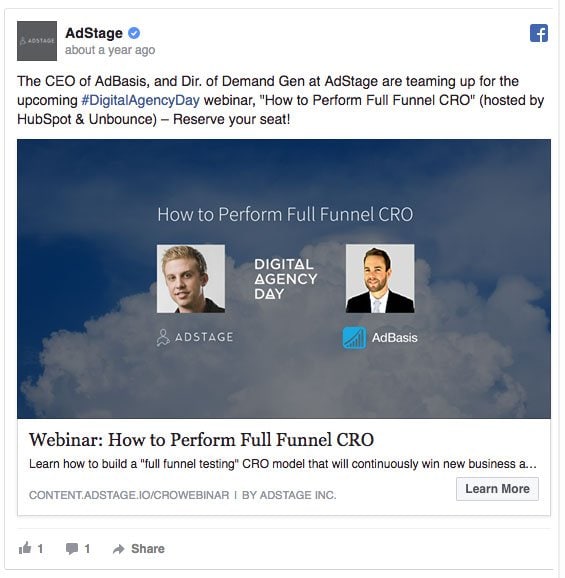Many eCommerce store owners focus heavily on PPC campaigns and digital ads while overlooking the power of influencer marketing. If you’re getting great ROI from PPC, why change?
Here’s why:
According to a 2024 study by Influencer Marketing Hub, influencer marketing generates $5.78 for every $1 spent.
That’s not a typo. In 2025, influencer marketing has evolved to become even more effective than traditional digital marketing. Brands leveraging influencers are reaching hyper-targeted audiences and driving massive ROI.
So, how do you get started? Follow this guide to learn how to work with influencers and create campaigns that deliver results.
Read on to find out!
Step 1: Find the Right Influencer
Many ecommerce store owners and marketing folks don’t realize this, but finding an influencer to work with your brand isn’t as straightforward as it seems.
You want to use all the screening methods at your disposal to ensure you find the right fit, but you don’t want to screen your potential influencers just by how huge their followings are, engage them for a campaign, and then realize that they’re completely wrong for your brand. (Or worse, they bought their followers)
This brings us to the question: Other than checking out the size of your influencer’s following, what other things do you need to look out for?
Firstly, consider the demographics of their following. This isn’t rocket science: If you’re selling women’s products and your influencer has a predominantly male following, that’s obviously not the right choice.
Other important demographics could include age, where they’re located, what language they speak and their interests.
Secondly, look at the other brands that your influencer is promoting. If you sell luxury handbags that retail for over a thousand dollars and your influencer has previously promoted inexpensive phone cases, then they also might not be the right fit.
What to Look for in Influencers
- Audience Demographics
Ensure the influencer’s audience matches your target market:- Age, gender, location, and interests.
- Brand Alignment
If you sell luxury products, don’t partner with an influencer who promotes budget items. - Authenticity and Engagement
- Use tools like HypeAuditor or Social Blade to check for fake followers.
- Look for influencers with consistent, genuine engagement.
- Personality Fit
Partner with influencers whose tone matches your brand:- Family-friendly brands need wholesome influencers.
- Edgy, experimental brands need dynamic personalities.
The tools for discovering and managing influencers have come a long way, and the outdated platforms of yesterday simply don’t cut it anymore. In 2025, brands rely on AI-driven analytics and streamlined platforms to ensure they’re partnering with the right influencers.
Here’s a look at the latest tools transforming influencer discovery and outreach:
1. Upfluence: AI-Driven Influencer Discovery and Outreach
Upfluence uses advanced AI to identify influencers based on detailed criteria like audience demographics, engagement rates, and niche relevance.
- Search for influencers across multiple platforms (Instagram, YouTube, TikTok).
- Automatically analyze audience authenticity and engagement.
- Streamline outreach with integrated email tools and CRM features.
Why it’s great for 2025: Upfluence saves time by automating influencer discovery and contact, making it a top choice for brands scaling their campaigns.
2. HypeAuditor: Fake Follower Detection and Audience Analytics
HypeAuditor has become the gold standard for detecting fake followers and bot engagement. It provides in-depth audience insights so you can confidently partner with influencers who have genuine, engaged followers.
- Spot suspicious spikes in follower growth to detect fraud.
- Access audience breakdowns: demographics, authenticity, and behavior.
- Monitor campaign performance with real-time data.
Why it’s great for 2025: With influencer fraud still a challenge, HypeAuditor ensures your budget goes to real, impactful creators.
3. AspireIQ: End-to-End Influencer Campaign Management
AspireIQ is a full-service platform for discovering, managing, and tracking influencer campaigns. It’s designed to simplify influencer marketing for eCommerce brands and growing businesses.
- Discover influencers tailored to your goals and audience.
- Collaborate seamlessly with influencers using integrated tools for content approvals and messaging.
- Measure ROI with automated reporting and performance analytics.
Why it’s great for 2025: AspireIQ is perfect for brands that need to manage multiple campaigns simultaneously while staying organized and tracking results.
4. TikTok Creator Marketplace: Find Short-Form Video Creators
As short-form video continues to dominate in 2025, TikTok Creator Marketplace remains a must-use tool. It connects brands with trending creators on TikTok who align with your target audience.
- Search for creators by category, audience demographics, and engagement rates.
- Access verified metrics for views, reach, and follower growth.
- Collaborate directly with TikTok influencers to launch viral campaigns.
Why it’s great for 2025: TikTok’s unparalleled reach and creative potential make it the go-to platform for brands targeting younger, engaged audiences through short-form content.
Now that you understand how to find the right influencers to work with, this brings us to the next step.
Step 2: Be Open to Inputs from Your Influencer
I know you have brand guidelines that you want to stick closely to but that doesn’t mean that you should just give your influencer a predetermined script and have them copy & paste it to their social media channels. Think about it:
- You’ve already put in the time to make sure that your influencer is a great fit for your brand.
- The fact that your influencer has a substantial following shows that they understand the type of content that their audience is receptive to.
- They also clearly have the ability to frame things in a way that makes their audience sit up and pay attention.
So why wouldn’t you want to take their feedback into consideration when crafting your campaign?
Key Questions to Ask Influencers
- What sponsored content has worked best for your audience?
- How do your followers prefer to engage with content?
- What creative ideas do you have for showcasing our products?
Your influencer knows what’s best for their audience and you know what’s best for your brand, so when you’re partnering with influencers make sure to get their input.
Step 3: Create a Compelling Campaign
Now that you’ve gotten the necessary inputs from your influencer, it’s time to put your campaign together. A word of advice: Make sure you do something that’s personal and non-generic.
Don’t settle for generic Instagram shoutouts. Get creative with campaigns that stand out in 2025.
Innovative Influencer Campaign Ideas
- Behind-the-Scenes Content
Example: If you sell snacks, invite influencers to taste-test new products live. - Co-Branded Product Launches
Collaborate with influencers to design special editions of your products. - Interactive Content
Partner with influencers to create TikTok challenges or Instagram Stories Q&A sessions. - Short-Form Video Dominance
Platforms like TikTok, Instagram Reels, and YouTube Shorts are essential in 2025. - User-Generated Content (UGC)
Encourage influencers to inspire their followers to create UGC, amplifying reach.
But what if you can’t afford the time, or the larger budget, required for these more elaborate campaigns and you still feel as though sticking with Instagram shoutouts are the best option for your brand?
In that case, go ahead and partner with your influencer to create Instagram shoutouts but be more selective about the caption and try and have your influencer come up with a caption that actually speaks to their personality and not just a caption with a generic, and personality-less, discount code.
All it takes is a little effort and creativity and you’ll be able to create a compelling campaign with your influencer!
Note: Be sure to repurpose your new content and use it to improve your site’s SEO!
Step 4: Amplify the Content
When your campaign finally goes live, it’s time to amplify it! Bear this in mind: You can have the best content in the world, but it won’t matter unless you have the proper distribution. So how do you amplify your content?
Once your influencer has posted on their social media channels, share the post using your company’s accounts, and get your employees to share the post as well. For best results (especially on Facebook!), make sure you do the sharing ASAP. What’s the rationale behind this?
When a piece of content gets shared multiple times within a few minutes of it being uploaded, this tells Facebook that people want to see more of it. As a result, Facebook’s algorithm will prioritize this content, and push it out so that it appears on more newsfeeds.
In addition to this, you can also run paid ads on Facebook Ads or Google Adwords. Either have your ads showcase your campaign with your influencer (check out point 8 of these Facebook ad examples below) or go ahead and run product-based ads that feature your influencer in them or a testimonial from them.

Tip: Be sure to check and see if your influencer has a fan page on Facebook. If their following on this fan page is large enough, you might be able to target your ads to people who are fans of them—this will help you achieve a higher conversion rate, and a lower cost per click!
Emerging Trends in Influencer Marketing for 2025
1. AI-Powered Influencer Marketing
AI tools now predict:
- Campaign ROI before launch.
- Audience fit and authenticity with advanced analytics.
2. Virtual Influencers
AI-generated personalities like Lil Miquela are gaining traction. Brands are testing virtual influencers for campaigns due to their low cost and full creative control.
3. Social Commerce Integration
Platforms like TikTok Shop and Instagram Checkout make it easy for followers to buy products directly from influencer content.
4. Micro and Nano Influencers
In 2025, micro-influencers (10k-50k followers) dominate due to their authenticity and strong niche communities.
How to Measure Influencer Marketing Success in 2025
In 2025, tracking success is more sophisticated. Here are the metrics that matter:
- Engagement Rates
- Shares, saves, and comments provide better insights than likes alone.
- Sales Conversions
- Use UTM tracking links or influencer-specific discount codes.
- Content Value
- Measure how often influencer content is repurposed and shared across channels.
- ROI Analytics
Tools like Google Analytics 4 and HubSpot track sales and customer acquisition directly from campaigns.
Final Thoughts on How to Work with Influencers
You can have the best product in the world, but at the end of the day, it simply isn’t going to be enough if you’re the only one rooting for your brand. You need to have others rooting for you, too and influencers are one of the best ways to get the word out fast and effectively!
Just remember the statistic mentioned at the beginning of this article: Influencer marketing generates 11 times the ROI of traditional digital marketing. That’s game-changing stuff, for real.
FAQs
What are virtual influencers, and should my brand work with them?
Virtual influencers are AI-generated personalities used for social campaigns. They’re ideal for brands looking for full creative control and consistent messaging.
How do I track influencer ROI in 2025?
Use tools like UTM links, Google Analytics 4, and affiliate dashboards to track clicks, conversions, and revenue.
Are micro-influencers still effective in 2025?
Yes! Micro-influencers continue to deliver high engagement and authentic connections with niche audiences.
Note: Need some help getting Influencers to work with you?
Check out our article on 10 Tips for Creating an Effective Influencer Outreach Email Campaign.






